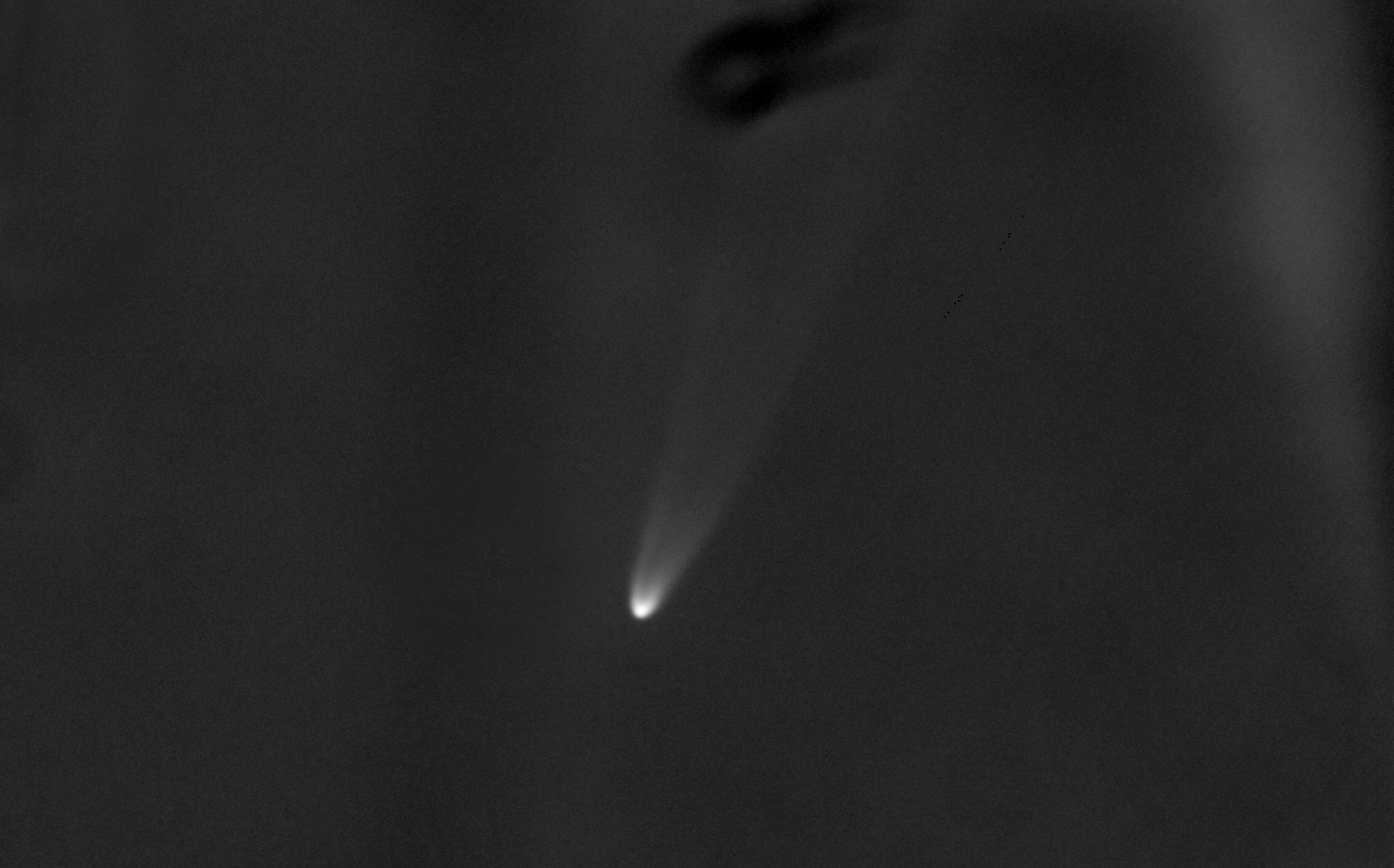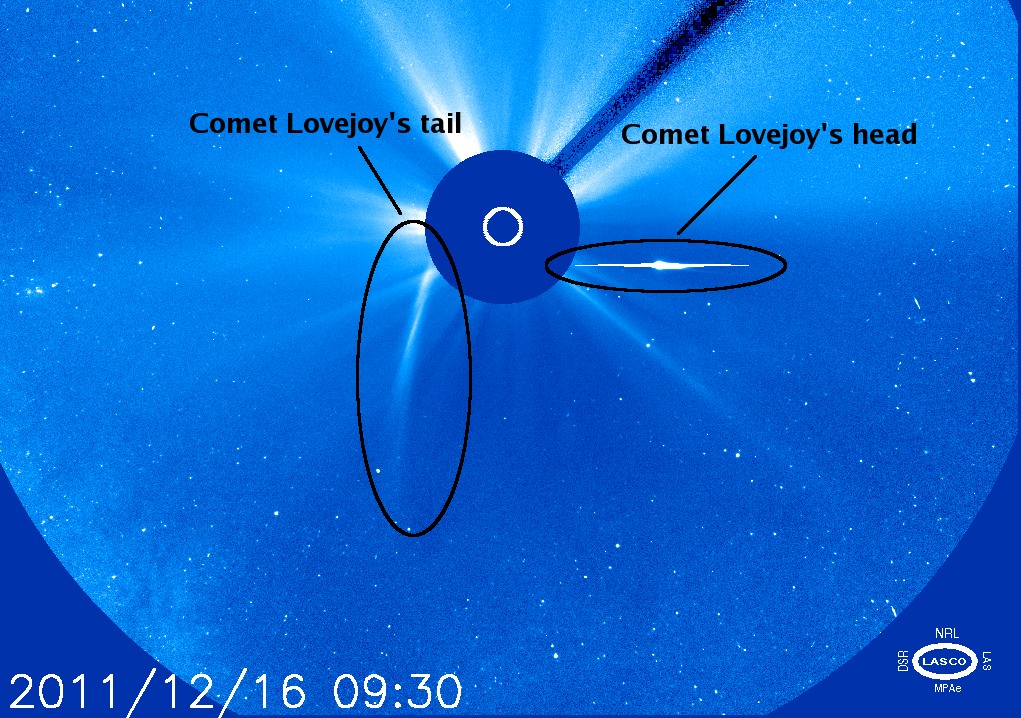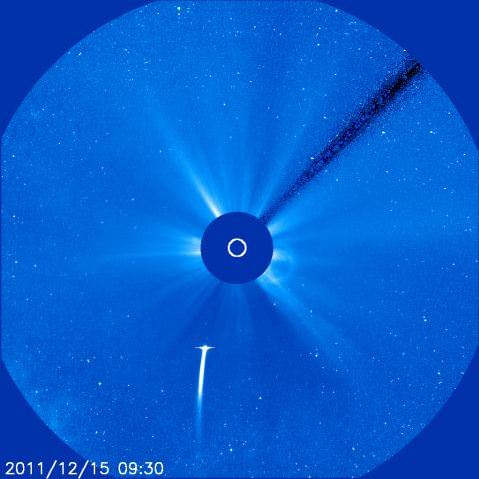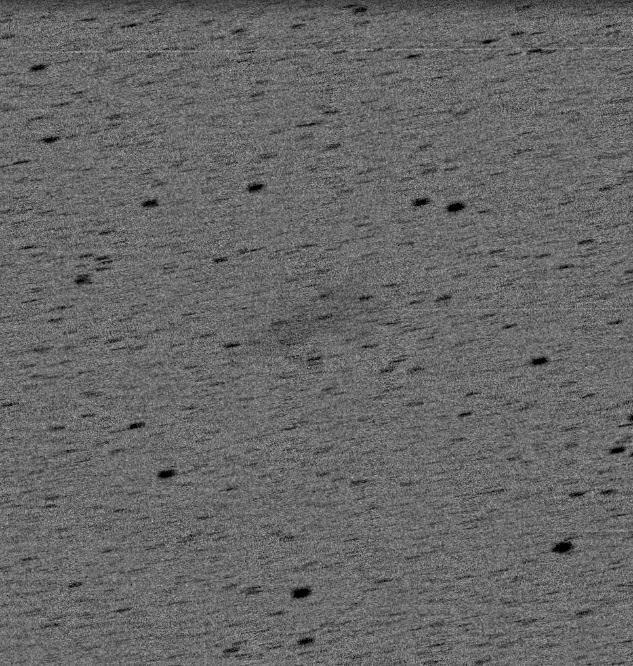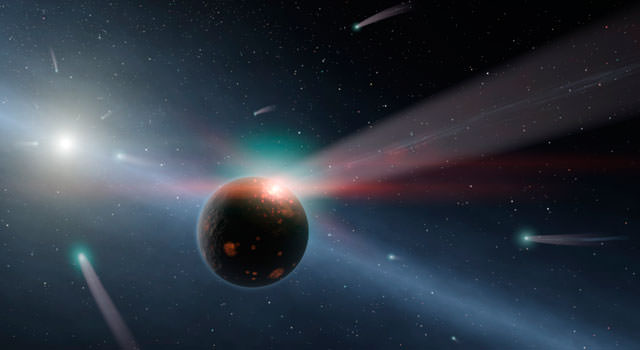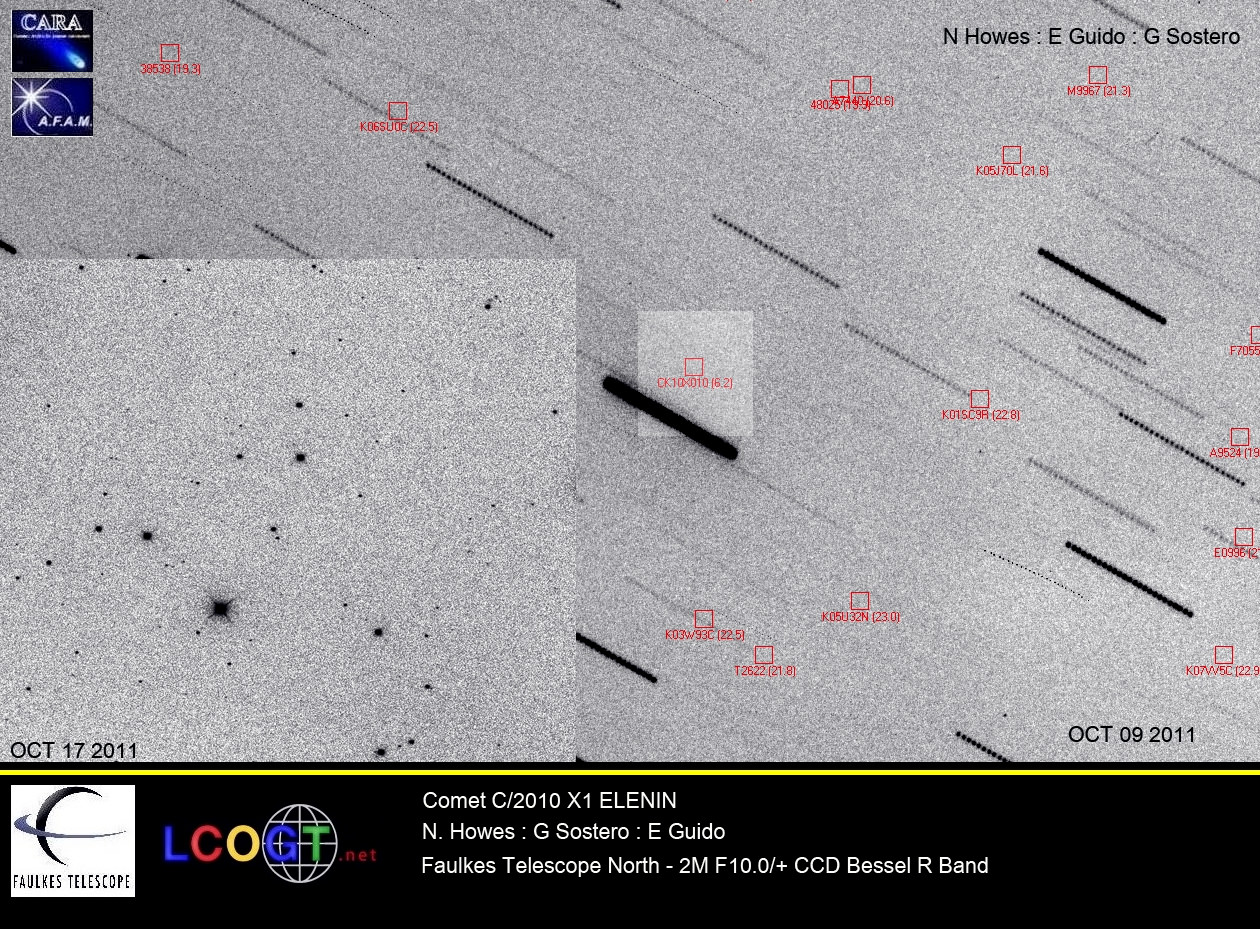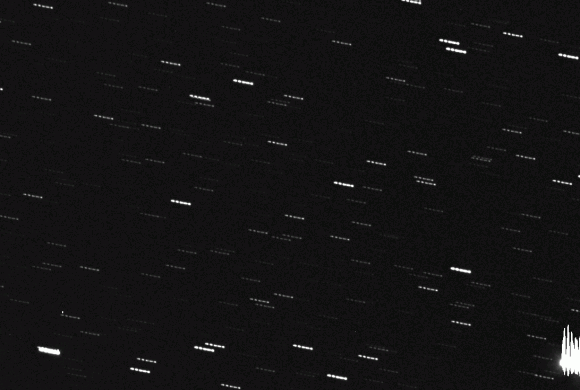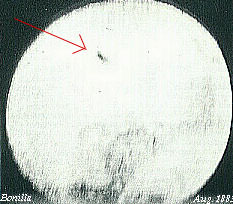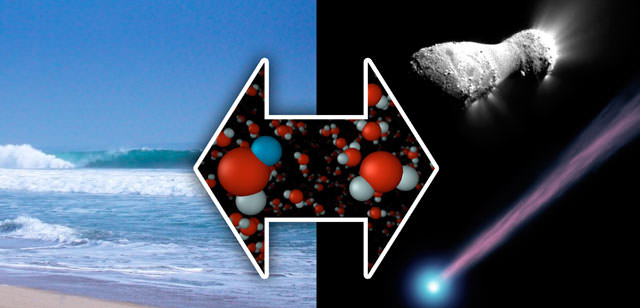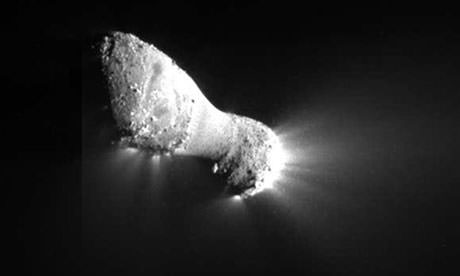[/caption]
It was almost a pre-holiday miracle that Comet Lovejoy survived its close encounter with the Sun on Dec. 15, 2011. But now, the feisty comet is making a ‘merry and bright’ comeback, re-sprouting its tail and showing up brilliantly when seen with binoculars and in telescopic images from southern hemisphere skywatchers.
“It was a big surprise that after going through the solar atmosphere it re-emerged with a beautiful tail,” Karl Battams told Universe Today. Battams is with Naval Research Laboratory and has been detailing the Comet Lovejoy’s incredible journey on the Sungrazing Comets website. “And basically within a day it was as bright after the encounter as it was before.”
The beautiful image above was taken on Dec. 17, 2011, clearly showing two gorgeous tails on Comet Lovejoy. See more from the Czech team that took the image at their website, Kommet.cz.
As much as this comet has surprised everyone, no one is going out on a limb and predicting it will become visible with the naked eye. But who knows? The comet’s discoverer, Austrailian amateur astronomer Terry Lovejoy was able to image the comet in the day time! ” I am hopeful of a nice binocular comet low in the dawn around Christmas time,” Lovejoy said on the Ice in Space website.
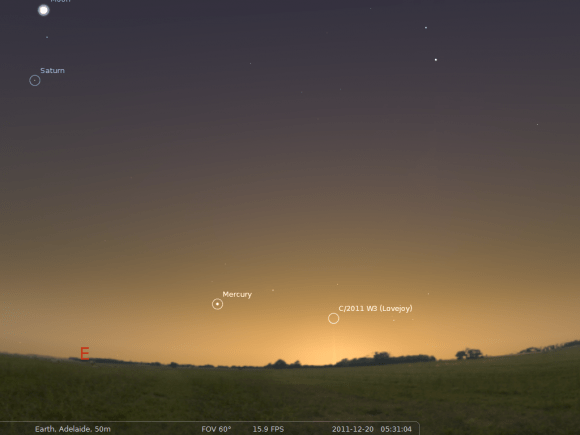
“Southern hemisphere viewers can see it now early in the morning,” Battams said via phone this morning. “It is going to become increasingly easy for them to see as it moves away from the Sun. I’m not sure it will increase in brightness anymore, as it has leveled off a little bit now. Odds are stacked in the favor of a nice nighttime show for southern viewers, and gradually it will fade away.”
Of course, Comet Lovejoy isn’t the only comet that has survived a close encounter with the Sun; in fact, some comets have even brightened to naked eye visibility after surviving a scorching from the Sun. The “Great Comets” of 1843 and 1882, and Comet Ikeya-Seki of 1965 were all Kreutz sungrazers – like Comet Lovejoy — and they all became brilliant after their solar encounters, with extraordinarily long tails.
Normally these comets don’t survive and are completely obliterated by the Sun. But the few that do – only 2 or 3 a century — can be very bright.
I had asked Battams on Friday – just after the comet emerged from behind the Sun – his thoughts on Comet Lovejoy and if it might follow the example of those previous surviving sungrazers.
“All bets are off as far as I’m concerned,” he wrote via email. “We thought this was a relatively small one — maybe a hundred or two meters in diameter. Clearly it can’t be. I did not expect it to survive perihelion as anything more than a diffuse blob that would rapidly dissipate. Instead it is pretty much as bright as it was before, just with less of a tail now.”
So keep a lookout for the holiday comet of 2011, the merry and bright Comet Lovejoy!

